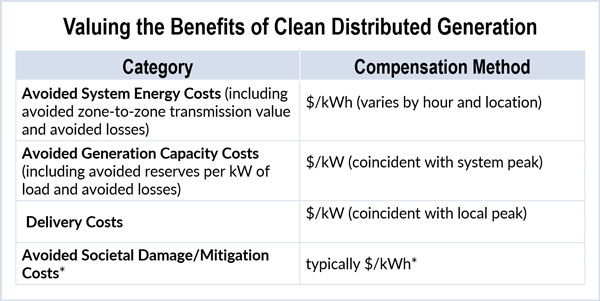By William Opalka
Staff of the New York Public Service Commission released a report on Thursday recommending a transition from net energy metering (NEM) to a compensation scheme that provides more accurate, granular values for distributed energy resources (15-E-0751).
“With a more accurate, market-based approach to compensate consumers for the value of their distributed clean energy investments, we will continue to take positive steps towards making these clean resources a core part of our energy system,” PSC Chair Audrey Zibelman said in a statement. “Under this cutting-edge framework, consumers, utilities and energy developers will be rewarded for investment decisions based on the full value that clean energy and other distributed energy resources provide to our electric system.”
Phase One of the transition will seek to apply values “that were able to be considered and discerned with currently available data,” the report says.
The mechanism will compensate customers using a tariff based on calculations of specific value sources. These value sources — including energy, capacity, reduced environmental impacts, demand reduction, locational system relief and distribution voltage support — would comprise a “value stack.”
Phase One will apply to all projects and technologies eligible for NEM under current rules, including solar photovoltaic generation, wind and micro hydroelectric generation, where the operator has no ability to control the facility’s output.
Also included would be dispatchable technologies such as fuel cells, farm waste generators and micro combined heat and power and energy storage paired with eligible generation facilities.
The report acknowledges that establishing these values will evolve and that utilities will need time to develop tools to calculate the impact of a resource’s location, the services it provides and its time of use to fully compensate homeowners.
Staff is proposing interim measures for community distributed generation (CDG) projects — sometimes called shared renewables — that are in the advanced stage of development. The interim rules would allow a specific number of projects to be compensated under current net metering rules for 90 business days. After that period, future CDG projects would be valued under the new methodology.
The report also envisions “virtual generation portfolios” codeveloped by utilities and DER providers.
Existing rooftop solar facilities would be paid at net metering rates for 20 years from the date of their installation. Since 2012, solar facilities in the state have grown from a little more than 78 MW to the current 669 MW, the PSC says. Owners of the systems would have the option to drop net metering and sign up for updated compensation plans.
Public comment will be accepted on the report, part of the state’s Reforming the Energy Vision initiative, until Dec. 5. Initial PSC action is expected in January.
Phase Two of the process, which would further refine the development of DER metrics, is slated to begin with a collaborative later this month. A final order is anticipated by the end of 2018.
Net Metering’s Shortfalls
The report said that while it “has been an important and effective tool in fostering the growth of” DER, “when combined with traditional volumetric rate structures, NEM provides an imprecise and incomplete signal of the full value and costs of DERs.”
“NEM therefore provides insufficient information on which to base informed investment and usage decisions that could benefit both the system and customers under REV,” the report continues. “As a result, investment in new DER capacity is often made without regard to how the design, siting and operation of those resources can maximize benefits to the electricity system overall.”
Failing to properly identify and compensate DERs for their value limits incentives for adding technologies such as smart inverters.
“At low levels of DER penetration, the economic inefficiencies resulting from the incomplete price signals embedded in NEM are less consequential, but as adoption increases, these potential misalignments — and the uneconomic effects associated with them — will increase,” the report said.
The LMP applied in the wholesale markets does not separate ancillary services, load shifting and environmental and performance benefits “that are essential design features of a fully optimized bidirectional power system and decarbonized network,” it said.
Collaborative
A collaborative effort involving utilities, consumer advocates, environmentalists, solar and DER providers that started last December was the first step in providing input for the new market framework. The report also builds on several REV-related efforts including the development of a benefit-cost analysis framework and utility distributed system implementation plans.
“Today, the customer side of the grid represents an enormous and largely untapped resource to optimize value throughout the electricity system. REV will establish markets so that customers and third parties can be active participants, to achieve dynamic energy management on a systemwide scale, resulting in a more efficient and secure electric system, including better utilization of bulk generation and transmission resources,” the report says.




